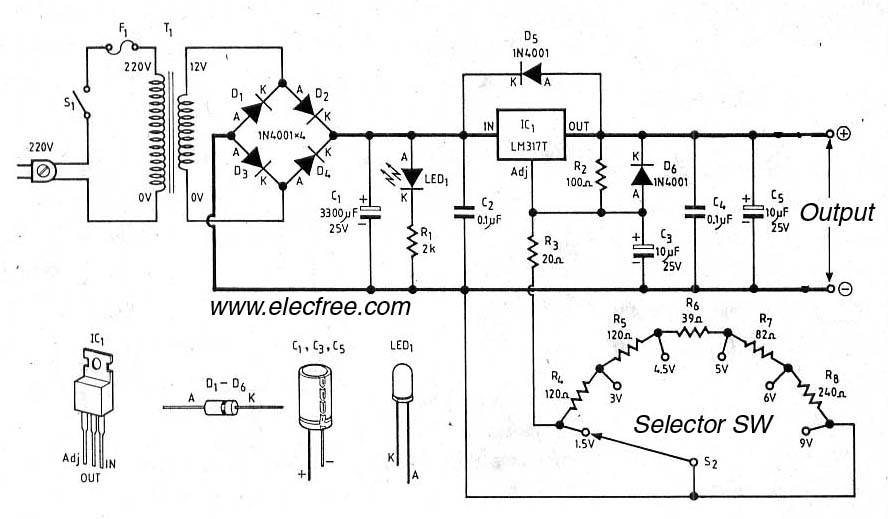-
Posts
2,433 -
Joined
-
Last visited
-
Days Won
1
Content Type
Profiles
Forums
Events
Posts posted by Hero999
-
-
-
Here's a similar project giving an example of how to do this:
http://www.enide.net/webcms/index.php?page=lm3914-batmon -
Please post a schematic.
-
The NC function generally needs a permanently live powersupply but there are ways round it.
The simplest way is to is to use a depletion mode power MOSFET or a JUGFET driving a BJT being driven by a small pulse transformer.
Another trick involves using a small battery to bias a transistor on and use an opto-coupler to turn it off. -
You need to attach the image.
Click additional options, then choose, find the file containg the image and click on open. -
That's probably not such a good idea.
It's a fairly low cost part and if you're unlucky enough to find a bad one in an old piece of equipment, you could waste a lot of time fault finding. It's really best practise to use new and known good parts for a prototype. -
You're right, it's a pair of diodes. It's actually quite common to get high power diodes in this kind of configuration. They're commonly used to connect two batteries together or as as a full wave rectifier with a centre tapped transformer in a switched mode power supply.
Have you tried typing the part number into a search engine? -
The clue lies in the symbol at the bottom of the package.
-
http://www.electronics-tutorials.ws/logic/logic_6.html
http://www.ustudy.in/node/3036 -
Why not buy one? The LM317 is a cheap commonly available part. If you see one in an old piece of electronics then use it, but it may not be as reliable as a new one. You should always opt for new parts whenever possible.
-
The current is not the proble, it's the voltage. You just need a 12VDC power supply capable of supplying more than 380mA, 500mA or 1A would do. I wouldn't recommend going over a couple of amps unless you add a fuse but that's only in case it develops a fault. You could use a 12V 100A PSU if you wanted but you'd need to fit a 1A fuse to protect the wiring.
-
The LED should be wired from pin 3 to 0V in order to have a duty cycle of greater than 50%.
-
To answer the origional question. It's definitely better to use a potential divider and a 5V reference. If more current is required, a non-inverting buffer could be used to reduce he output impedance.
-
It's impossible to say without any additional information such as a schematic or detailed description of the circuit.
-
How muchpower do you require?
It's possible with the ICL7660 but it's restricted to low currents.
http://datasheetoo.com/power-supply/generating-negative-supply-using-the-icl7660-circuit-schematic-and-datasheet.html -
http://uk.farnell.com/cypress-semiconductor/cy3277/programmable-lv-powerline-communication/dp/1828765?CMP=KNC-GUK-FUK-GEN-KWL-G30-CYPRESS_SEMICONDUCTOR
-
Posting a schematic would make it easier for us to help you.
You obviously need to use a more powerful transistor and/or add a heat sink to keep it cool. Another option could be replacing the Darlington pair with a MOSFET or connect the collector of one of the driver transistor to +V, via a current limiting resistor. -
Why not use the LM317 and put the the voltage selector switch on the potential divider?
A Google image search returns a similar circuit to what you need on the third hit. It's easy to modify it to give the voltages you need. You'll need a higher voltage transformer than 12V to reliably get 12V out: 15 V should do.
http://www.eleccircuit.com/lm317-linear-power-supply-regulator-selector-15v3v45v5v6v9v-15a/
https://www.google.co.uk/search?client=opera&q=LM317+regulator&oe=utf-8&channel=suggest&um=1&ie=UTF-8&hl=en&tbm=isch&source=og&sa=N&tab=wi&ei=mngKUeTCBcqp0AWVwIDoDw&biw=1920&bih=927&sei=u3gKUeaYGou10QWLs4D4Dg -
Try the LM317, a transformer, ectifier and filter capacitor.
-
http://www.st.com/internet/com/TECHNICAL_RESOURCES/TECHNICAL_LITERATURE/DATASHEET/CD00000545.pdf
-
LED stands for light emitting diode and is not a bulb but a semiconductor chip which produces light when an electric current is passed through it. The voltage across the diode is dependant what the chip is made of and the current flowing through it. You need to limit the current which can be done using a resistor or a circuit such as a the Joule Thief discussed earlier. A white LED has a forward voltage of between 3.2V and 3.8V and an AA cell provides between 1V and 1.6V so a boost converter is required: the joule theif does this too.
-
A "Joule Thief" circuit can be used to power white LEDs from a single 1.5V battery.
Mercury switches are banned in Europe. I don't know about the US. Fortunately, non-mercury tilt switchs are available. -
You're wrong, whether the resistor is in series with both the capacitor and battery or just the battery will make little difference to the charging time.
-
The resistor is in series with the batteries.
A capacitor is not necessary because the battery doesn't care about the ripple current.
I agree, increase the resistor to 1k to 2k to limit the current to something more sensible.




12v 1A automatic charger fault, loud buzzing from transformer.
in Power Electronics
Posted
The voltage are what you should expect - nothing wrong there.